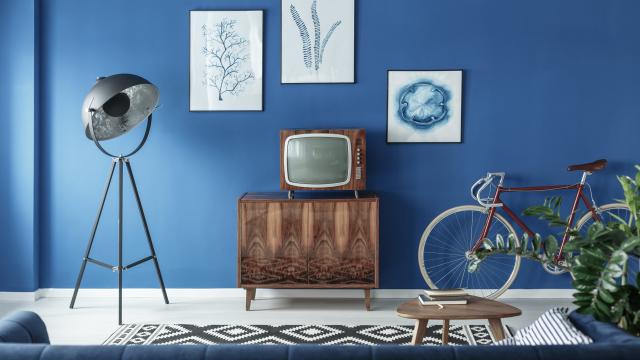Whether you’ve recently moved into a new house or apartment, or are taking advantage of another winter cooped up at home to make some improvements to your place, there are plenty of things to consider when coming up with a decorating plan. Along with factors like your budget and how the room is going to be used, there’s another important piece of the puzzle: the direction that the room — and your entire home — is facing. Here’s how to figure that out and why it matters.
How to determine which direction your home is facing
If you don’t already know which way your home faces, you’ll just need a compass (and yes, the one in Google Maps works). If you’re in a house, stand at the front door and see which direction the compass is pointing.
If you’re in an apartment — or want to figure out the direction a specific room in your house is facing — it’s not quite as straightforward. Sure, you could stand at the front door and see which direction the building faces, but if you’re decorating a room on the other side of the structure, that may not be as useful.
When it comes to decorating, the important part is figuring out which direction the natural light is coming from. So to figure that out, use your compass when facing the direction of window(s) that is the major source of natural light in the room.
Why direction matters
Ultimately, one orientation isn’t superior to the others, Megan Devine explains in an article on BobVila.com. Each comes with its own benefits and challenges, so it’s more a matter of understanding what those are and how to address them.
In addition to determining the natural light, the direction a home faces has other implications, including those related to energy efficiency, heating and cooling costs, home maintenance and energy flow. Our focus here will be on decorating choices, but read Devine’s article to learn more about the other ways orientation impacts a home.
How to use home orientation when decorating
As we discussed above, the direction a home (or room) faces determines the amount — and timing — of the natural light it gets. Here are a few ways to use that knowledge to inform your decorating and design choices:
Use of blinds and curtains
East-facing homes (or rooms) get the morning sun. While this is great for regulating circadian rhythms, people who don’t necessarily want to wake up when the sun rises may want to invest in some blackout curtain or blinds. Similarly, if the room faces west and you do want assistance from the sun to help you wake up each morning, you may want to consider thin curtains that give you privacy, but also allow light to get in.
[referenced id=”670249″ url=”https://www.lifehacker.com.au/2015/06/how-your-circadian-rhythm-affects-your-health/” thumb=”https://www.gizmodo.com.au/wp-content/uploads/sites/4/2015/06/03/1279649687594817200-300×263.jpg” title=”How Your Circadian Rhythm Affects Your Health” excerpt=”Have you ever noticed that you feel more susceptible to asthma attacks in the evening, or skin allergies in the afternoon? It’s not just random. The Wall Street Journal put together a handy chart that shows when you body is most susceptible to certain health problems.”]
Colour choices
The time of day that a room gets most of its natural light also can help you select colours for the walls, furniture and other decor. Here are two examples from Devine:
For instance, design pros might steer you away from red and orange hues in west-facing rooms, which get most of their sunlight from 2 p.m. on. Fans of bold or dark colours may want to confine them to south-facing rooms, which get enough light all day to stand up to intense tones.
Furniture placement
Now that so many of us have some type of home office — even if that’s simply a makeshift desk in another room or hallway — it’s time to think about the type of natural light that your workspace is getting. For example, if it’s in a room that’s west-facing and doesn’t get much light until the afternoon, you’re going to want to make sure that you have plenty of lamps or other sources of artificial light — not only to help you see what you’re working on, but also to help you wake up as you start your day.
Use of mirrors
If a room doesn’t get much natural light, a well-placed mirror (or two) can help amplify the light that the room does get, without having to add more light fixtures.

Leave a Reply
You must be logged in to post a comment.